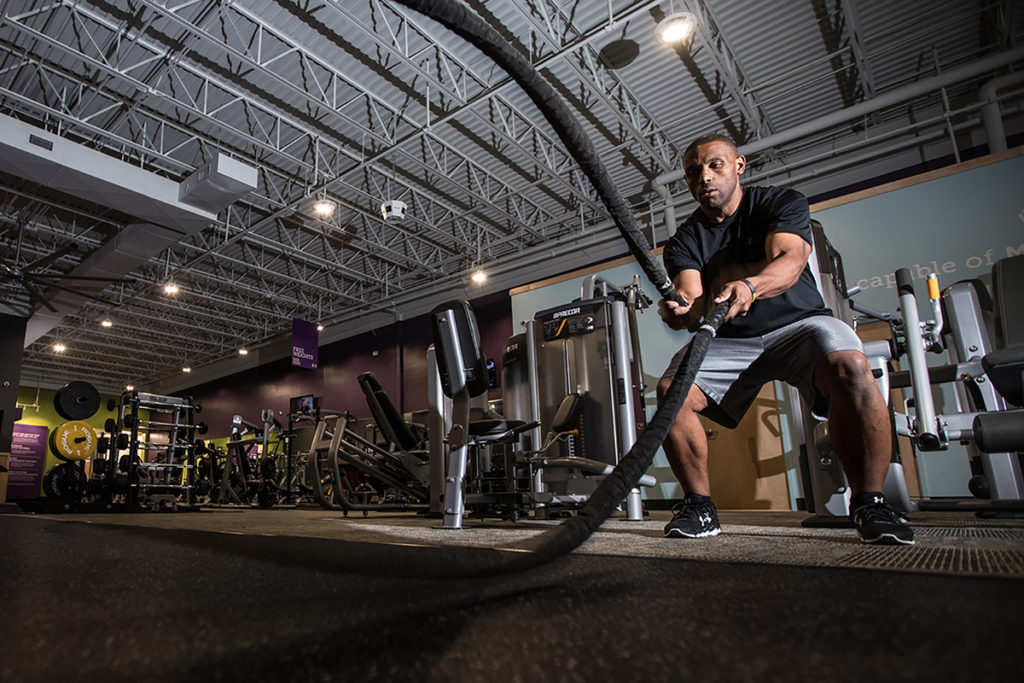Sponsored Content
Build Fitness Without Demolishing Joints
Not EVERY body is meant to jump. But everybody can get a high-intensity workout!

High-impact exercises—such as burpees, jumping jacks and other moves that get both feet off the ground simultaneously—can help to build strength and endurance and shed fat quickly.
As a result, they’re often incorporated into high-intensity interval training (HIIT) workouts, which have gained recognition because they burn an impressive number of calories in a short time and boost metabolism for up to 48 hours after the workout’s over, through the afterburn effect.
But HIIT doesn’t necessarily need to include ballistic movement to be effective. Low-impact exercises can be used instead to get your heart rate up and the sweat pouring.
That’s good news—because high-impact exercises are not a perfect fit for every body. Some high-impact movements can be difficult to execute, particularly for people who are just starting their fitness journey. And because such movements can cause wear and tear on ligaments and joints, those recovering from an injury or dealing with a chronic physical condition (such as bad knees or back pain) often need to avoid them.
High-Intensity Without the Joint Stress
Because so many folks need a workout that puts less stress on the joints, a new trend has gained attention lately: high-intensity, low-impact training (HILIT). While this relies on some of the same strategies found in a typical HIIT workout—including elevating heart rate and incorporating intervals for intense calorie burn—the movements are low-impact.
HILIT is a gentler alternative to workouts that involve ballistic movements, meaning more people can do the exercises without risking injury. More importantly, it gets results!
Low-Impact Calorie-Burning Exercises
Rowing, cycling and using power ropes are great examples of low-impact, equipment-based exercises that are currently popular. Many step aerobic workouts will also fall under this category. All these options can be used to develop a fun, effective HILIT workout routine.
HILIT can also be equipment-free, involving things like lunges, squats, inchworms, fast feet and jump-free burpees.
Whatever direction HILIT takes, the workout should do three things:
- Challenge your body.
- Avoid placing a significant downward force on bones and joints.
- Alternate bursts of speed or intensity with active resting periods.
A Winning Strategy for Group Fitness
With all the benefits offered by HILIT workouts, incorporating (more of) them into your rotation of group fitness classes can be a win-win scenario. Here’s why:
- They have a broad appeal because more people are able to do them as opposed to HIIT. Individuals who are less fit or recovering from an injury can often take advantage of a HILIT group fitness class—whereas a workout with high-impact moves could be beyond their abilities.
- They hit a sweet spot. Their high-intensity movements challenge the body but do not require quite as much recovery, time and effort as their higher-impact cousins. In short, they have many of the benefits of high-impact with fewer of the costs, making them a perfect fit for just about anyone seeking to up their fitness level and burn some calories fast.
- They have been hailed for creating a less competitive group fitness atmosphere. And because of the nature of movement in a HILIT routine, people are less likely to overdo it, which helps them avoid injury while burning calories.
Learn more about how to use HILIT and other group fitness best practices through an online master’s degree in Exercise Science from California University of Pennsylvania (Cal U), which has partnered with Les Mills™ to create a specialized program in Group Fitness Leadership.
Cal U also offers an online bachelor’s degree in Exercise Science and additional master’s concentrations in Wellness Coaching, Sport Performance Enhancement and Injury Prevention, Nutrition, Wellness and Fitness, Sport Psychology, Tactical Strength and Conditioning, Rehabilitation Science and Applied Sport Science.






